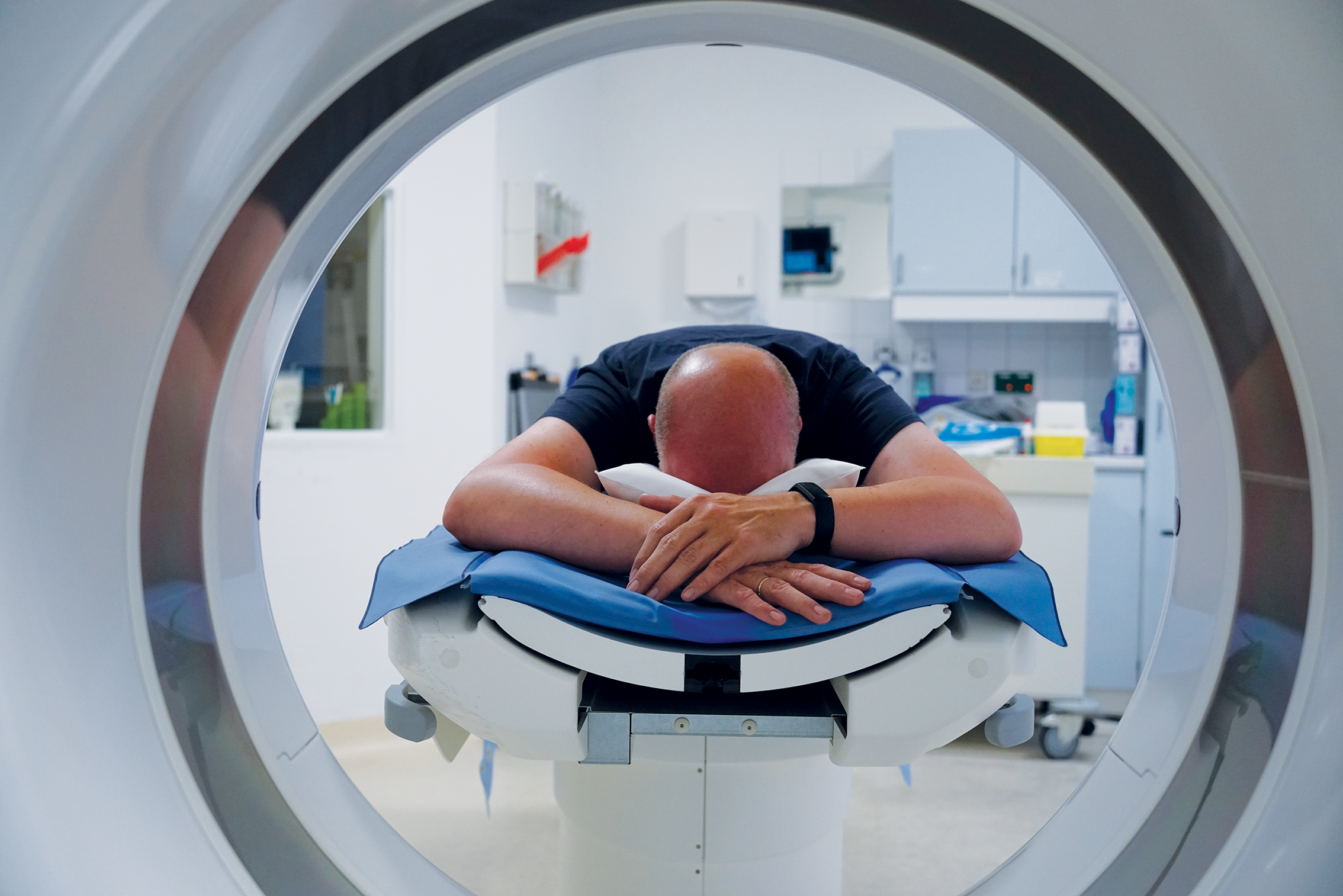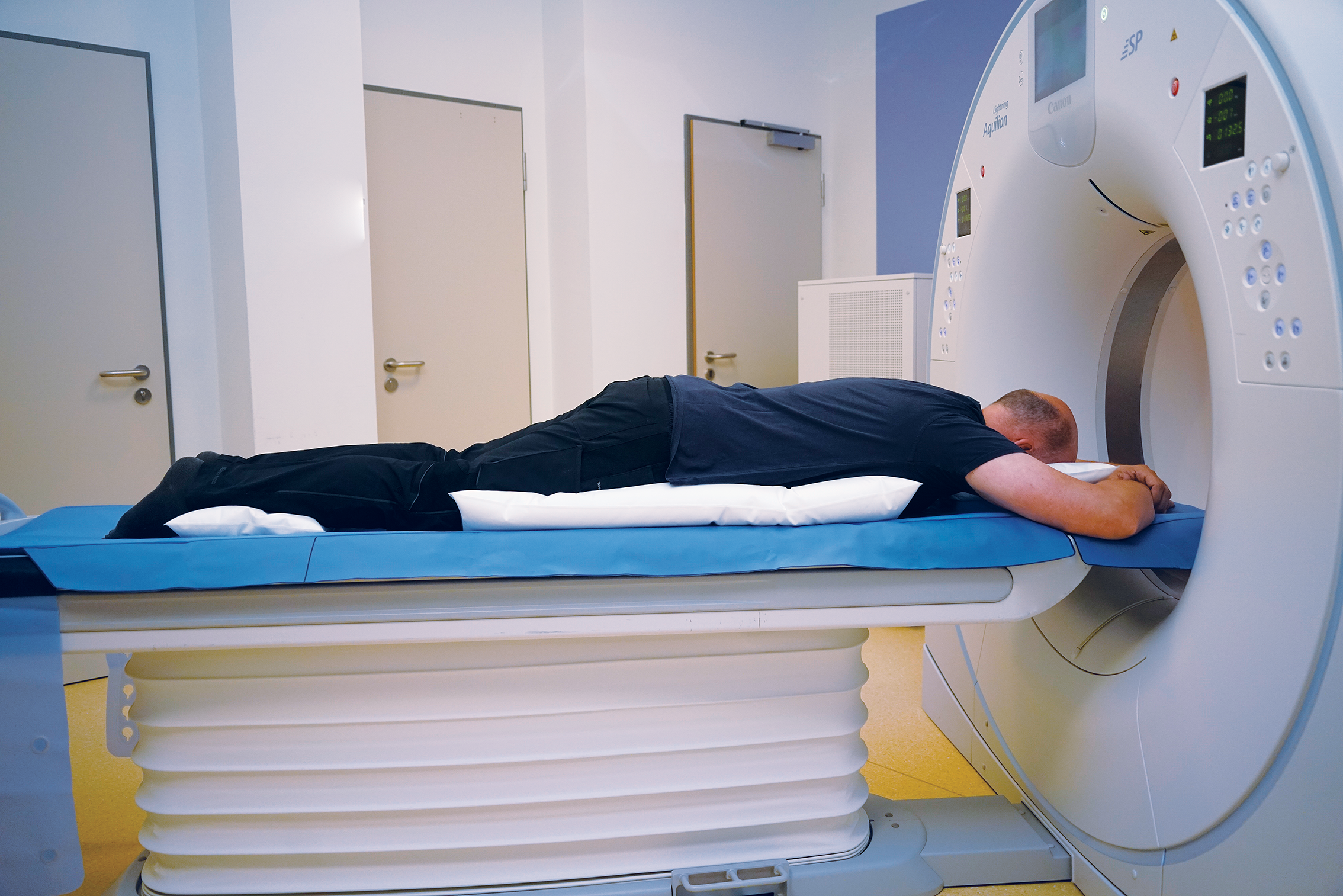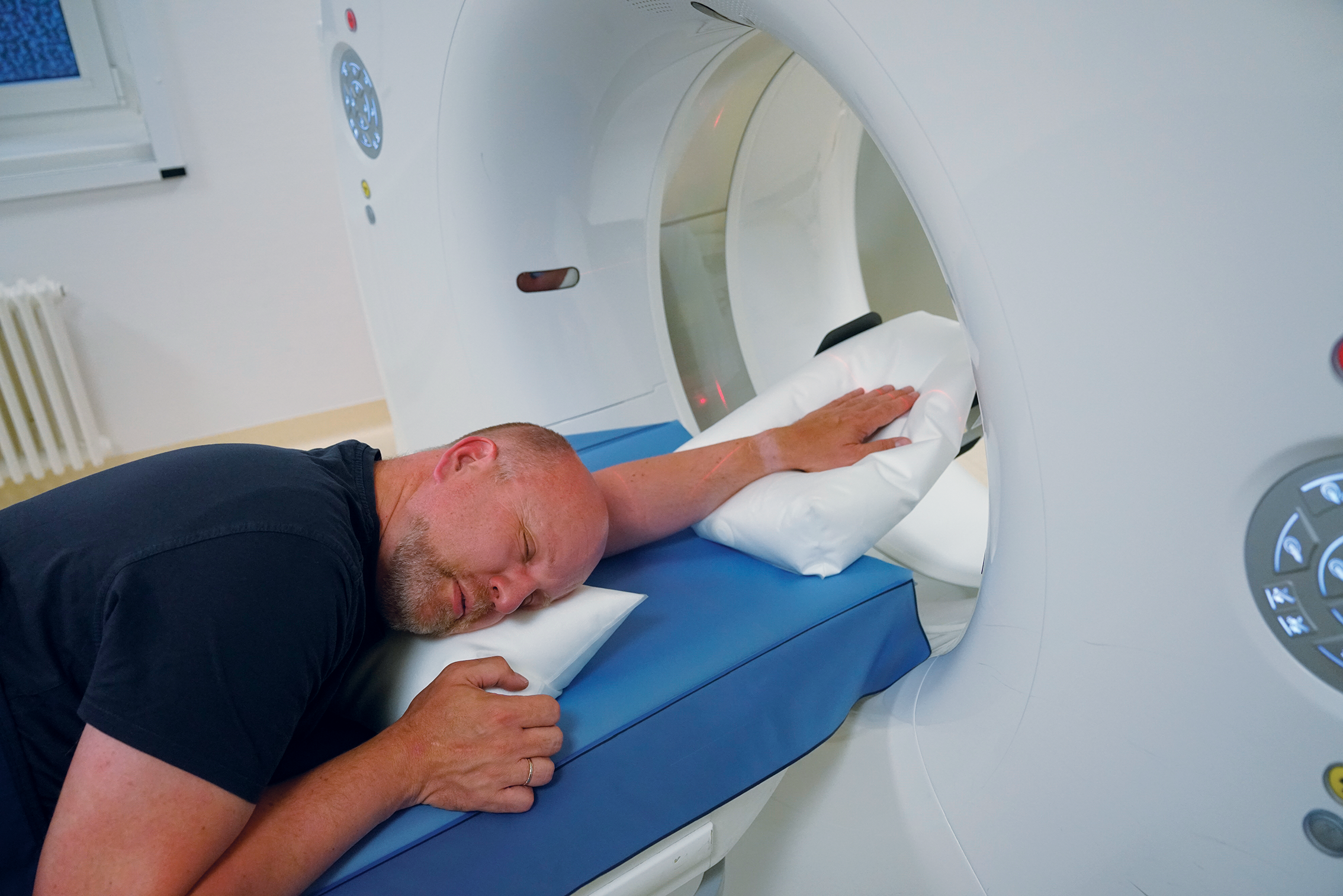
In both CT and MRI, there are indications that require the patient to be placed in the prone position. Lying in prone position is less of a challenge in "sleeping mode" on a comfortable mattress. But when undergoing a CT or MRI examination, in addition to the much harder and narrower table mattress, a variety of additional factors such as severe nervousness, breathing problems or anxiety come into play.
Furthermore, it is not possible to move or get up during the examination, which can make the wait for the end of the procedure seem endless at times.The most common situations in prone position include the following examinations and treatments:
- Hand and elbow joint in CT and MRI
- Mamma CT and MRI
- Interventions, drainage systems and punctures especially in the spinal area in CT and MRI
- Special abdominal indications in MRI and CT

Just a few minutes can be enough to turn an uncomfortable and pressing spot into a painful occurrence. Once that pain is the patient’s focus, the patient can less concentrate on breathing commands let alone on lying as still as possible. Interruptions of the examinations may be the result, what subsequently can negatively impact findings and treatment outcomes.
There are several measures that have proven effective in practice, and which can improve the challenges described above. Firstly, good communication with the patient and informing about the reasons for the specific positioning lay an important basis for success. Second, choosing a positioning that is adapted to the needs of the patient is crucial. These are some key areas to pay attention to:
- Padding under the feet (i.e., with a rol, pillow or wedge) to relieve pressure on the knees and ankles, but also to take tension out of the lower back.
- Comfortable positioning of the head:
- the patient must be able to breathe (positioning aids with air chambers such as the PearlFit Forehead form Pearl Technology are an ideal solution).
- the cervical spine should not be overstretched by the positioning - do not pad the head too high.
- Headphones in the MRI must not press but must nevertheless fulfill their purpose (if necessary, use earplugs).
- Use the arms, if not needed for the examination, to support the head position (attention, also the back of the hand can lead to pressure points after a while).
- In “superman”-position, the shoulder must necessarily be supported with pads in the armpit, as the arm falls asleep quickly and the shoulder and cervical spine can cause severe pain.
- Position as large and evenly as possible to relieve pressure-sensitive areas (i.e., sternum, costal arch). It is essential to ensure that the cushions used do not themselves become a burden (pay attention to thickness of the cushion and possible hard points such as buckles, straps or fasteners).
- Patients with strong lordosis (hollow back) should be offered a flat pillow at the level of the lower abdomen, otherwise the lower back can cause pain.

Especially for these difficult situations: practice makes perfect. The best way to ensure improvements is to work together as a team to re-enact the positioning situations with different aids and to exchange and discuss experiences.
Credits to: Dorina Petersen for preparing the content https://www.dorina-petersen.de
